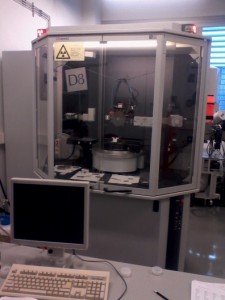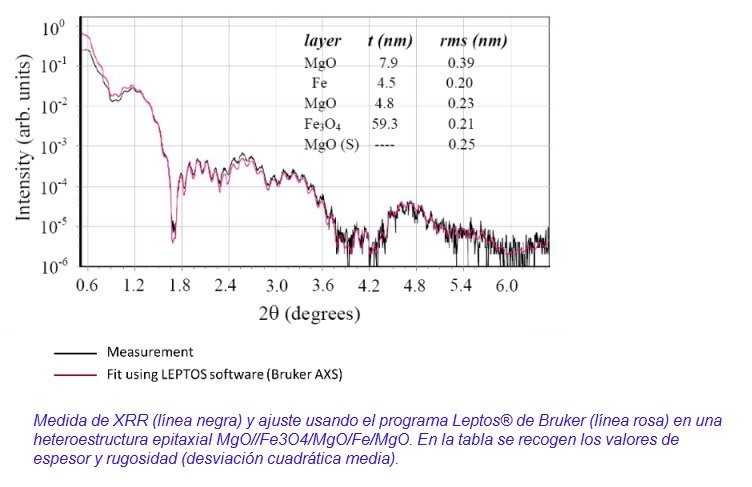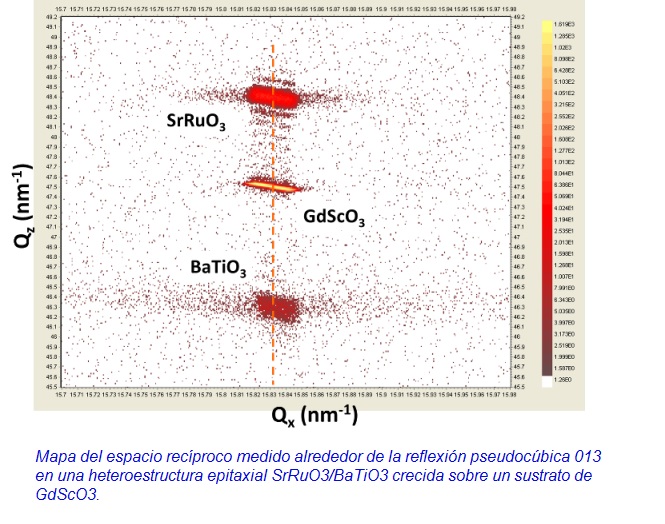
XRD: BRUKER D8 ADVANCE HIGH RESOLUTION DIFFRACTOMETER
XRDX-ray scattering is routinely used to determine the crystal structure, orientation, lattice parameters and crystal quality in crystalline materials (X-ray diffraction) and thickness, density or roughness of thin films and multilayers (X-ray reflectivity).
The equipment configuration is optimized for high-resolution X-ray diffraction (HR-XRD) and reflectivity (XRR) studies in nanostructured thin films and superlattices. For this purpose it includes incident and diffracted-beam monochromators, collimators, attenuators and eulerian sample holder. It also allows the local mapping of flat samples through motorized lateral displacements.
XRD at LMA uses a D8 Advance diffractometer provided by Bruker Española S.A. This instrument has several modes, including:
- High resolution diffraction in epitaxial films and multilayers
- Reciprocal space maps
- Wafer mapping
- X-ray reflectivity
- Structural characterization of single-crystal or strongly textured thin films
- Grazing incidence diffraction (GID)
The XRD equipment is mainly used by researchers growing epitaxial thin films in the following applications and research lines:
- Epitaxially strained thin films)
- Magnetic thin films and nanostructres for applications in Spintronics)
- Multiferroic films and multilayers)
- Thin films showing thermoelectric effects (such as spin Seebeck)
The expertise of our scientific and technical staff is also offered to researchers from public and private research centers and also to professionals from industrial sectors that require the use of this instrument.
- WHAT KIND OF INFORMATION CAN BE OBTAINED WITH THESE INSTRUMENTS?
- SAMPLE REQUIREMENT
- TECHNICAL SPECIFICATION
XRD and XRR provide the following information in thin films:
- Chemical composition
- Crystal structure
- Lattice parameters
- Substrate and film orientation
- Miscut angle in single-crystal substrates
- Crystalline quality and texture
- Roughness
- Density
- Thickness
- Defects, dislocations
- Stress
Although this facility is very versatile and the analysis of powder samples is feasible, the current configuration is optimized for the study of thin films.
- X-ray generator with copper anode
- (022) Ge monochromator (Cu Ka1 line)
- Parallel-beam optics (Göbel mirror)
- Eulerian cradle and XYZ translation stage
- Zeta and Xi tilt stage for grazing incidence X-ray diffraction
- Suction device for securing flat samples
- Soller slits
- X-ray beam intensity attenuator
- Automatic alignment control by microscope and laser beam
- Scintillation counter
- Analysis software and databases





